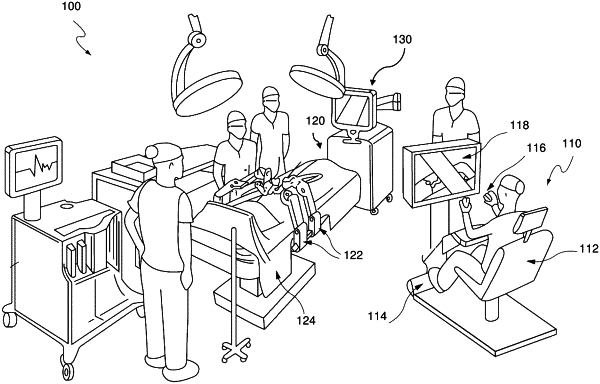| CPC A61B 34/35 (2016.02) [A61B 34/37 (2016.02); B25J 9/02 (2013.01); B25J 9/101 (2013.01); B25J 9/1607 (2013.01); B25J 9/1648 (2013.01); B25J 9/1651 (2013.01)] | 19 Claims |

|
1. A method for teleoperation of a surgical robotic system, the method comprising:
receiving a user command to move a surgical tool mounted on a robotic arm during the teleoperation;
solving iteratively, by a first optimization of a solver, for linear motion of the move in a first stage of kinematics, the solving in the first stage providing a solution from the first optimization for the linear motion without solving for angular motion;
solving iteratively, by a second optimization of the solver, for the angular motion of the move in a second stage separate from the first stage of the kinematics, the solving in the second stage providing a solution from the second optimization for the angular motion without solving for the linear motion where the solving in the second stage and corresponding solution for the angular motion is independent of the solving in the first stage and corresponding solution for the linear motion, the iterative solving for the angular motion and corresponding second optimization being decoupled as a separate solving than the iterative solving for the linear motion and corresponding first optimization such that any limit violation affects the linear motion and angular motion independently due to the decoupling; and
moving the robotic arm and/or surgical tool based on the solutions for the linear motion and the angular motion.
|